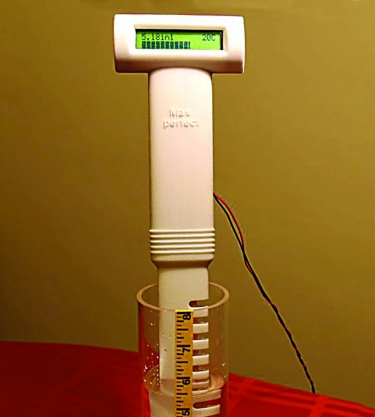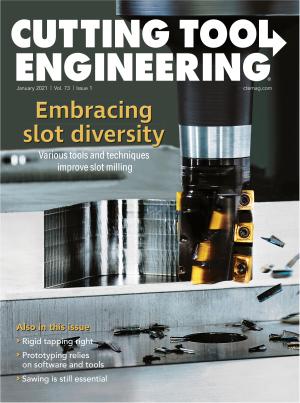The Unifying Smart Sensor for autonomous fluid management systems uses proprietary technology for real-time monitoring of the heat removal capability of coolant, acidity levels, the amount of coolant and its temperature.
“Instead of aggregating different technologies of single-function sensors that also require compensation and calibration, the Unifying Sensor uses a single technology to monitor most of the functions of fluid quality and quantity without needing calibration or compensation,” said Josef Maatuk, a consultant at Max Em Engineering in Los Angeles.
The Wave technology probe consists of a thin organic layer with etched traces of a thermocouple for measuring the temperature of liquids. The junction of dissimilar metals produces electrical potential related to temperature.
Maatuk, who developed the sensor, likens it to a self-driving car because it can monitor and control fluid quality and quantity and tell a user, for example, when more water or acid neutralizer is needed for a process.

The Unifying Smart Sensor is shown. Image courtesy of Max Em Engineering
A single continuous heated wire with junctions along its length that measure relative increases in temperature in the boundary layer around the heater indicates how much heat is removed during cutting, as well as how fast the heat is removed. By applying different sequences of power to the heater, the continuous fluid level also can be determined accurately. The same heater can be used to measure coolant temperature at a few points along the wire.
Heat removal is controlled by keeping the ratio of coolant to water at a desired range through use of a refractometer. Maatuk said the refraction index of a solution is not always a good indicator of its heat removal capabilities. The refractive index of a solution with bad coolant that occupies only 5% of the solution volume might be the same refractive index as a solution with 5% of good coolant.
The sensor wirelessly sends monitoring results to a laptop or cellphone, and he said the sensor can help increase the life of coolant and reduce the number of rejected parts. Maintenance costs also may be reduced.
Replacing two or more sensors, the sensor can be integrated in liquid containers during the manufacturing process.
Maatuk hopes to find a strategic partner to help Max Em Engineering produce and market the sensor. He can be reached at 310-274-1434, 310-497-9859, [email protected] or [email protected]. For more information about the company, visit www.maxperfect.net.
Related Glossary Terms
- calibration
calibration
Checking measuring instruments and devices against a master set to ensure that, over time, they have remained dimensionally stable and nominally accurate.
- coolant
coolant
Fluid that reduces temperature buildup at the tool/workpiece interface during machining. Normally takes the form of a liquid such as soluble or chemical mixtures (semisynthetic, synthetic) but can be pressurized air or other gas. Because of water’s ability to absorb great quantities of heat, it is widely used as a coolant and vehicle for various cutting compounds, with the water-to-compound ratio varying with the machining task. See cutting fluid; semisynthetic cutting fluid; soluble-oil cutting fluid; synthetic cutting fluid.
- refractometer
refractometer
Optical instrument that measures the refractive index of a liquid, such as a water-diluted metalworking fluid mix. The refractive index can by used to determine the concentration of a fresh metalworking fluid mix.


